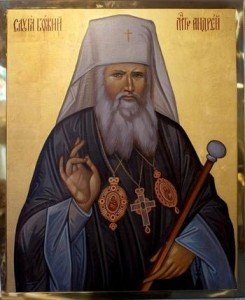Blessed Andrew Sheptysky wrote this: “The veneration of the Holy Cross of the Lord is one of the most significant aspects of the worship of the God-Man. Signing ourselves with the sign of the Cross is one of the oldest customs of Christians”.
Indeed, the Cross is an ever living symbol of God’s absolute, continuing, and unconditional love for humankind. It is, in the deepest sense of the word, the absolute revelation to humankind about how to live life, that is facing all of the challenges of life with absolute hope and trust in God and not allowing the real struggles of life to embitter us or cause us to distort the truth of God’s great love for us. It tells us that, although God will not rescue us from the trials of life, He is here with us, supporting us as we go through the trials. The Cross tells us that even in the darkest moments of life, GOD IS With US.
While this feast is very ancient, the history of the institution of the feast, like the history of the finding of the holy Cross, has been obscured by various legends and it is not easy to separate historical fact from pious legend.
We must remember that in celebrating this feast, we are not concerned with the ordinary veneration of the holy Cross, which takes place on the third Sunday of the Great Fast, but with that aspect of the feast which is expressed in the name of the feast itself, the EXALTATION or ELEVATION of the Holy Cross.
Historians of the Eastern Church generally agree that two particular events rise to the institution of this feast: the finding of the Holy Cross in the fourth century and its recovery or return from Persian captivity in the seventh century.
The feast owes its origin to the consecration of the Church of the Resurrection which was erected on Golgotha by Emperor Constantine in 335 on September 13. It was on the following day that there was the elevation of the Holy Cross.
The second event was the return of the Cross from Persian captivity in 614 by Emperor Heraclius. He had it brought back to Jerusalem and on September 14th it again was elevated before the faithful. From that time on, the feast has been called “The Universal Exaltation of the Venerable and Life-giving Cross”. Since this feast calls to mind the crucifixion and death of Christ, it has been given an equal rank with Great and Good Friday. The Church calls us to voluntarily observe a strict fast on this day.

